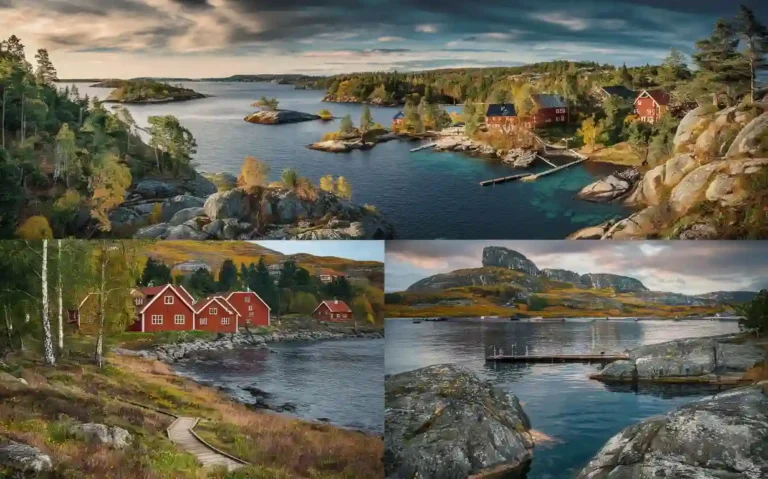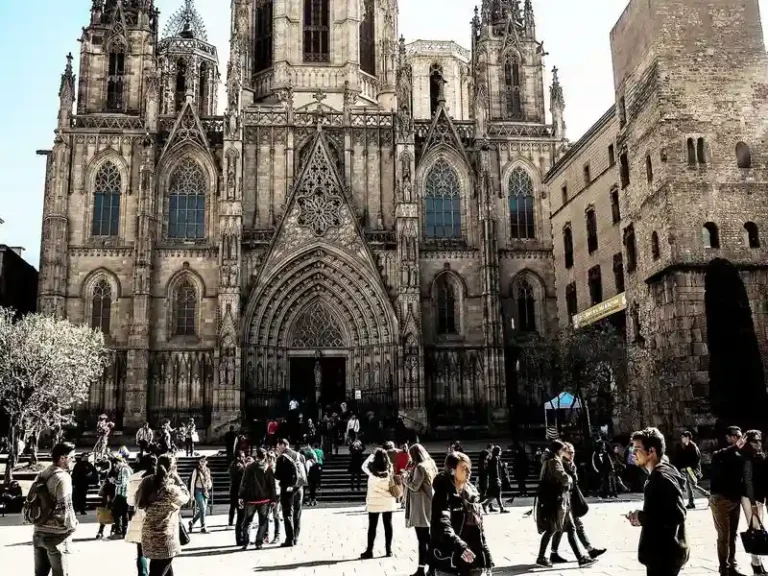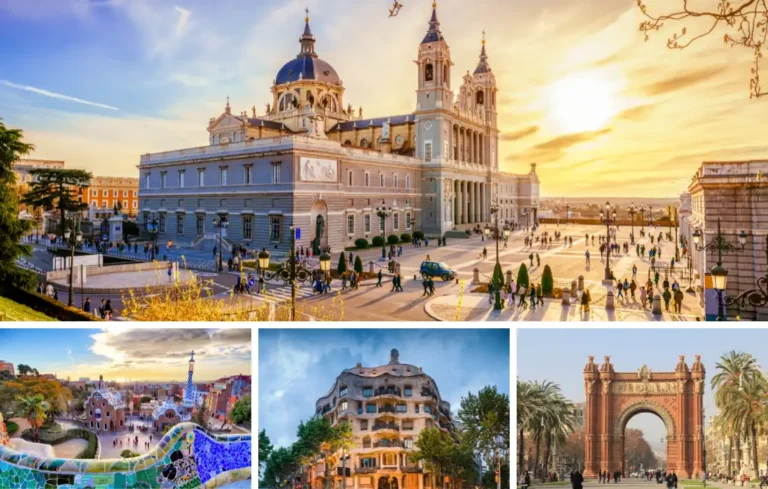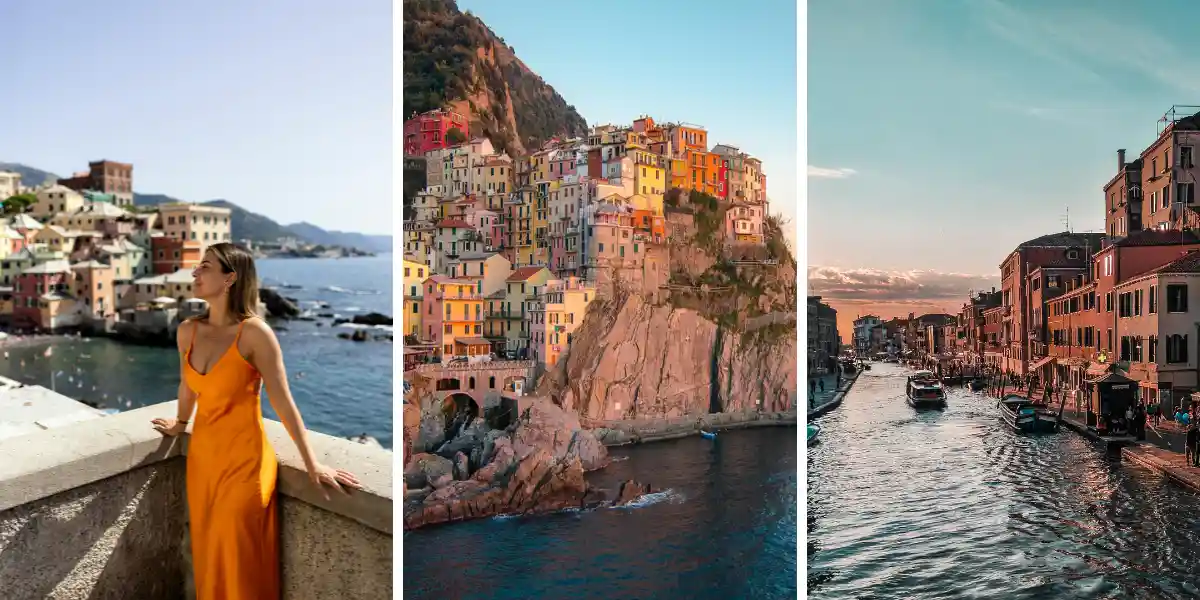
Italy might be celebrated for icons like Rome, Florence, Venice, and the Amalfi Coast, but the country’s soul often reveals itself in quieter corners. These Hidden Gems in Italy are the places where I’ve found the truest sense of daily life — medieval towns that seem paused in time, lakeside sanctuaries wrapped in mist, and seaside villages where traditions run deeper than tourism.
Over years of traveling across the peninsula, I’ve learned that the most rewarding moments come when you turn away from the famous piazzas and walk Cinque Terre villages where locals still greet you on cobbled streets. These are destinations I’ve revisited more than once, often with different seasons showing entirely new sides of them.
What follows is a curated collection of 15 hidden gems of Italy — each with its own rhythm, history, and flavor. Perfect for repeat travelers looking to go beyond the classics, or first-time visitors ready to swap crowds for authenticity.
If you’ve ever wondered what lies just past the guidebook covers, this guide to Hidden Gems in Italy is your key.
How to Use This Guide
Before diving into the list, it helps to understand what makes a place a hidden gem. For me, it’s not just about being lesser-known — it’s about a place offering something deeply authentic, whether that’s a centuries-old festival, a family-owned trattoria that still cooks with nonna’s recipes, or landscapes that make you pause without the distraction of selfie sticks.
To make navigation easy, I’ve tagged each destination with traveler-friendly icons:
- Culture – historic centers, art, and local traditions
- Hiking – mountain trails, nature reserves, and scenic paths
- Food – regional specialties, vineyards, and markets
- Photo – perfect sunrise, sunset, or dramatic landscapes
- Train-Friendly – accessible by Italian trains without needing car rentals
- Family – safe, relaxed, and welcoming for children
Alongside the descriptions, I’ll include personal insights on when to visit, how to get there, and where to stay. You’ll also find clusters and ready-made itineraries later in the article — a structure I’ve tested while helping friends plan their own Italian trips.
Think of this guide as half inspiration, half practical handbook for mapping out your own journey through the hidden gems scattered across the country.
List of 15 amazing Hidden Gems in Italy
1. Brisighella, Emilia-Romagna
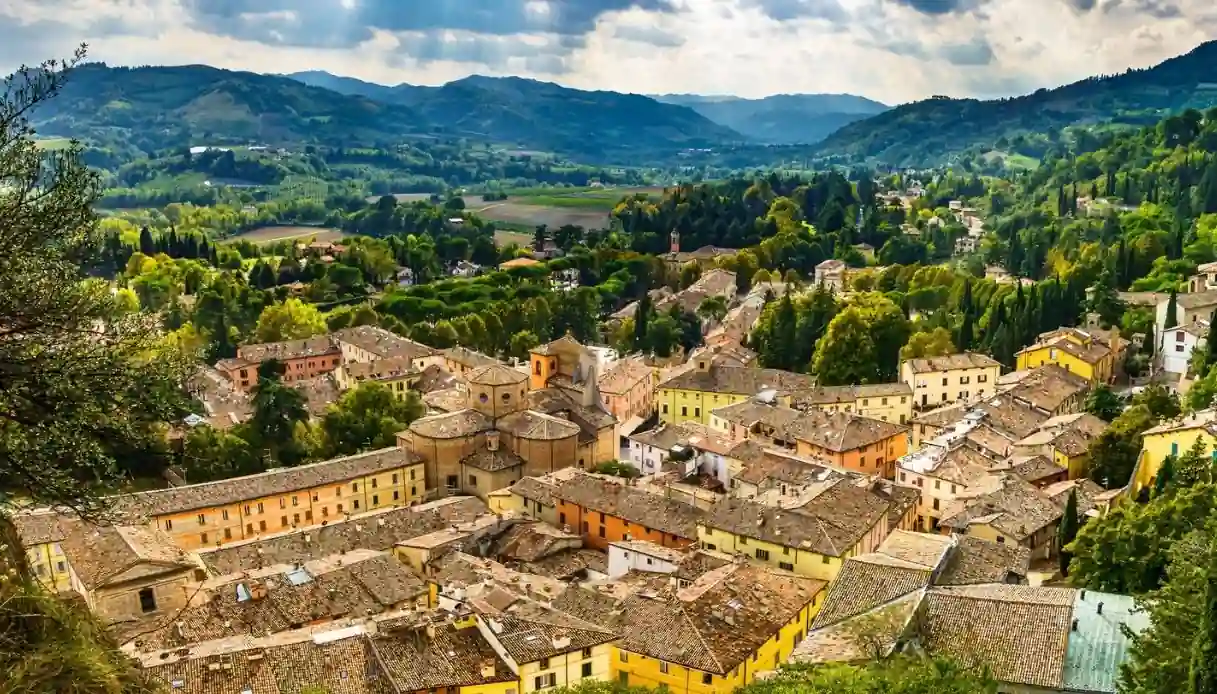
Brisighella is a hillside town I first stumbled upon while following the olive oil trail in Emilia-Romagna. Unlike nearby Bologna or Ravenna, Brisighella retains the kind of intimacy you rarely find in major tourist attractions. Narrow medieval lanes wind past pastel houses, while three hilltop sanctuaries — the fortress, clock tower, and Monticino church — watch over the valley below.
The town is known for producing some of Italy’s finest olive oil, and autumn harvest season fills the air with a nutty aroma. The medieval streets also host traditional food fairs, where I learned to taste olive oil the same way you might sample fine wine.
Best time to visit: Late spring or early autumn, when the weather is mild and the crowds are virtually absent.
How to get there: Brisighella sits on a scenic train line between Florence and Ravenna. For flexibility, car rentals from Bologna give you the chance to explore the surrounding hills.
What to do: Walk the Via degli Asini (“Donkey’s Alley”), a covered medieval street with arched windows. Visit local enotecas for tastings, and hike up to the fortress for sweeping views of the Lamone Valley.
Where to stay: Boutique B&Bs inside historic stone houses — my favorite was one run by a family who also owns olive groves, offering breakfast made with their own oil.
Photo tip: Head to the clock tower at golden hour — the light paints the rooftops with a warm glow that looks straight out of a Renaissance painting.
Caution: The climb to the sanctuaries involves steep stairs. Comfortable shoes are a must.
2. Gorizia & Nova Gorica
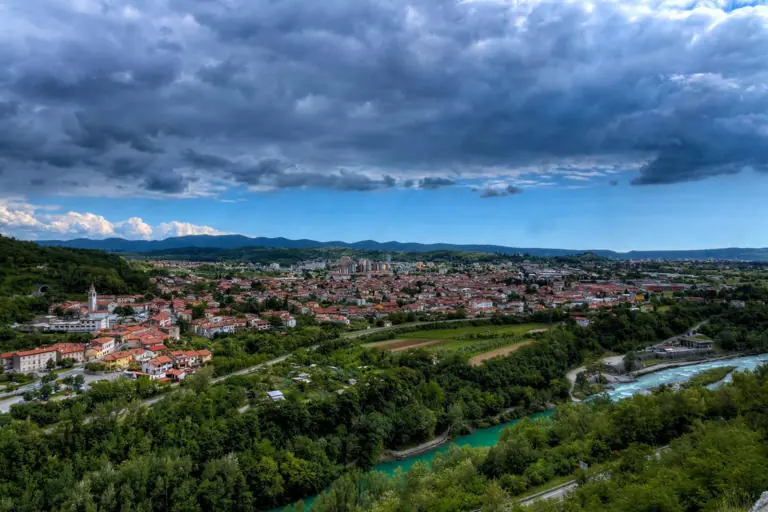
Straddling the border between Italy and Slovenia, Gorizia and Nova Gorica form one of Europe’s most fascinating cross-cultural hubs. I remember crossing from one side of the town to the other without even realizing I had left Italy — the main square is literally divided by an invisible line.
This is where centuries of Venetian, Habsburg, and Slavic influences collide, creating a cultural mix you won’t find in typical tourist attractions.
The medieval Castello di Gorizia towers above the Italian side, while Nova Gorica pulses with modern cafés and casinos. During festivals, the two towns celebrate side by side, blending languages, music, and food traditions.
Best time to visit: May and September, when the weather is pleasant, and outdoor cultural events are at their peak.
How to get there: From Trieste, public transit makes it easy to reach Gorizia. Trains also run regularly from Udine.
What to do: Explore the castle and its panoramic terrace, then cross into Nova Gorica for contemporary art exhibitions. Hike along the green river valleys nearby, or attend the international wine festivals that bring producers from both sides of the border.
Where to stay: Family-run pensions on the Italian side offer homestyle meals, while modern hotels in Nova Gorica provide casino-style entertainment.
Photo tip: Capture both towns from the castle viewpoint — the juxtaposition of historic rooftops and modern skylines tells the story in a single frame.
Caution: Remember to carry ID — while borders are open within the EU, occasional checks still happen.
3. Val di Funes, South Tyrol
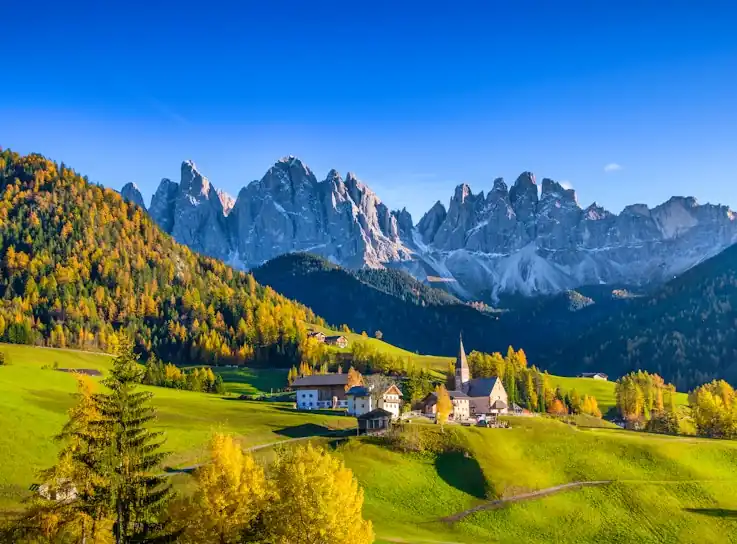
The first time I saw Val di Funes at sunrise, the jagged Dolomite peaks were glowing pink while mist curled through alpine meadows. It felt like stepping into a storybook. Nestled in South Tyrol, this valley is one of the most breathtaking hidden gems I’ve explored in northern Italy.
Aside from its iconic churches of Santa Maddalena and San Giovanni framed against the Odle peaks, Val di Funes is a base for endless hiking trails that wind through golden pastures and dense forests. It’s quieter than tourist-heavy Dolomiti hot spots like Val Gardena, but no less magical.
Best time to visit: Summer for hiking, autumn for fiery foliage. Winter brings snowshoeing and peaceful alpine silence.
How to get there: Italian trains connect you to Bolzano, from where regional buses or car rentals take you deep into the valley.
What to do: Spend a day at the Biathlon Center near Anterselva, where I once tried cross-country skiing with a local instructor. Enjoy mountain huts serving hearty dumplings and speck, and hike to panoramic spots like the Adolf Munkel Trail.
Where to stay: Hotel Messnerwirt is a gem itself — I’ve stayed here twice, and its traditional wooden interiors and farm-to-table dining made me feel part of the valley.
Photo tip: Arrive early at Santa Maddalena church for that perfect shot of the Dolomites glowing in morning light.
Caution: Weather changes fast in the mountains; pack layers even in summer.
4. Chiavenna, Lombardy
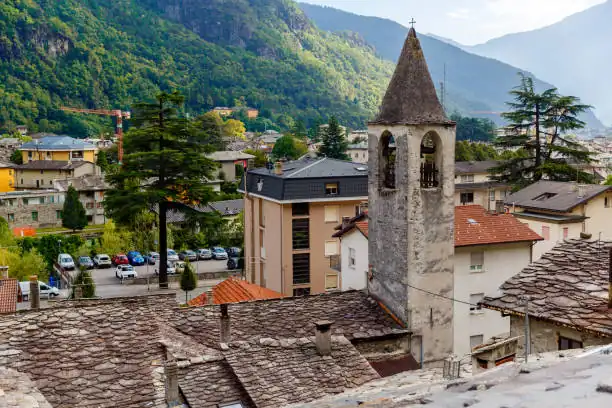
Chiavenna is a mountain gateway town near the Swiss border, and it surprised me with its blend of alpine beauty and culinary heritage. I stopped here on my way to St. Moritz and ended up staying two nights longer than planned — drawn in by waterfalls, dining caves, and the easy pace of life.
The town’s crotti — natural stone cellars used for aging wine and cheese — now double as atmospheric restaurants. Dining inside one of these cool chambers while tasting local pizzoccheri pasta was an experience I’ll never forget.
Best time to visit: June to September for hiking, or December when festive lights turn the town into a winter postcard.
How to get there: Regular trains connect Milan to Chiavenna in about two and a half hours. It’s also a common stop for travelers driving toward the Maloja Pass into Switzerland.
What to do: Visit the Acquafraggia waterfalls just outside town, stroll medieval alleys lined with frescoed palazzi, and try local wines in the crotti. For active travelers, mountain trails lead up to breathtaking alpine lakes.
Where to stay: Small family hotels along the river offer both charm and comfort. I stayed in one where the owner personally shared his hiking maps — a reminder of the hospitality you find in these smaller places.
Photo tip: Capture the waterfalls after a summer rain — the spray often forms rainbows across the valley.
Caution: Many crotti are seasonal, opening mainly in summer and autumn. Plan dining reservations ahead.
5. Comacchio, Emilia-Romagna
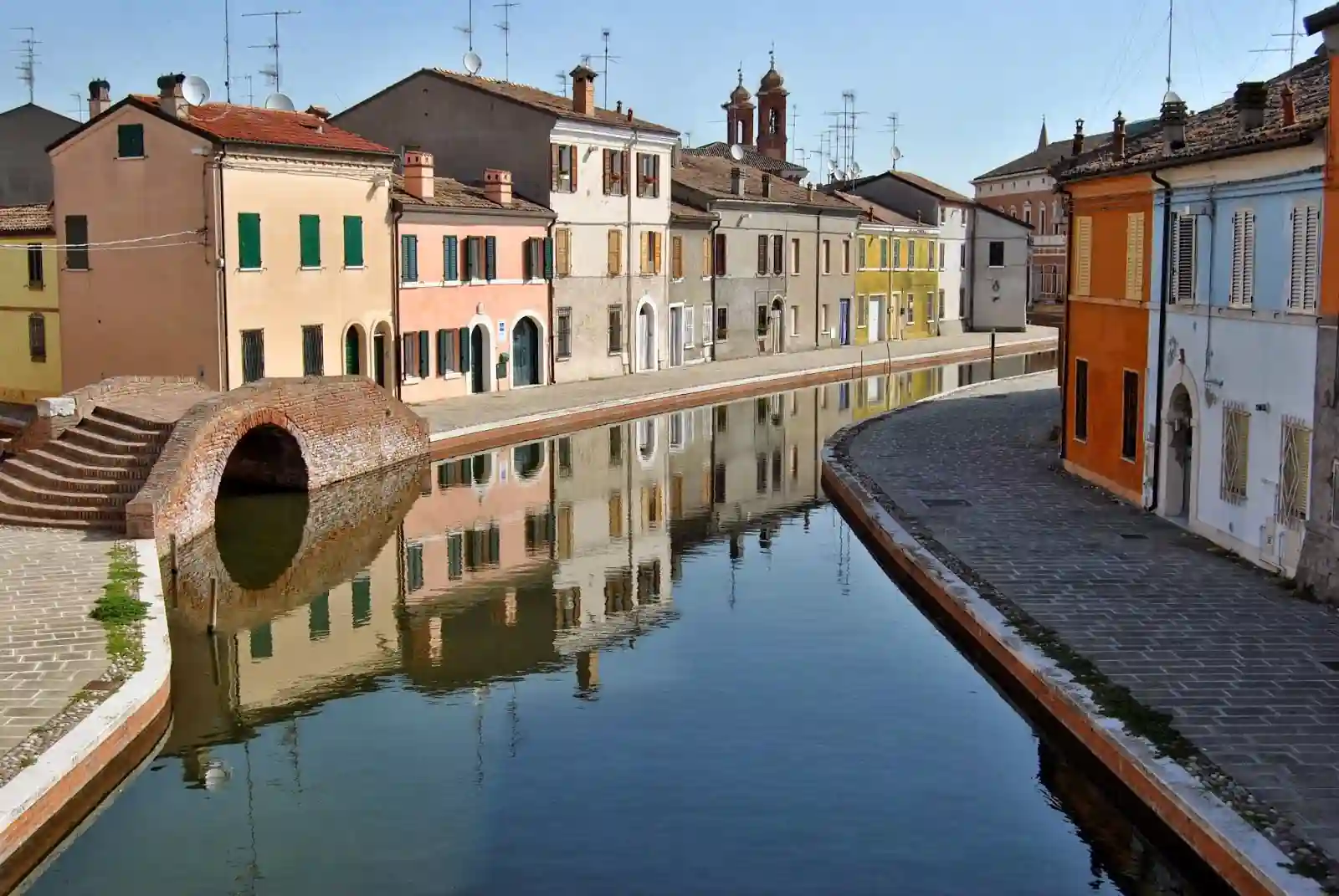
Often called “Little Venice,” Comacchio is a network of canals, bridges, and pastel houses that feels untouched by mass tourism. I first visited while exploring the Po Delta wetlands and was struck by how calm the town felt compared to Venice — locals cycling along canals, fishermen repairing nets, and kids playing on the bridges.
Comacchio is renowned for its eel traditions, and the Manifattura dei Marinati museum tells the story of this centuries-old trade. The surrounding wetlands are also prime for birdwatching, with flamingos often spotted at sunrise.
Best time to visit: Spring and autumn, when migratory birds fill the Po Delta.
How to get there: From Ferrara or Ravenna, car rentals are the easiest option. Public transit connections exist but are less frequent.
What to do: Wander the Trepponti bridge, sample marinated eel dishes, and take a boat trip into the lagoon. Photographers will love the pastel reflections in the quiet canals.
Where to stay: Family-run inns near the historic center, where breakfasts often include fresh pastries and regional jams.
Photo tip: Climb Trepponti bridge at sunset — the canals mirror the pink skies, creating postcard shots.
Caution: Limited nightlife; evenings are quiet, which is part of its charm.
6. Civita di Bagnoregio, Lazio
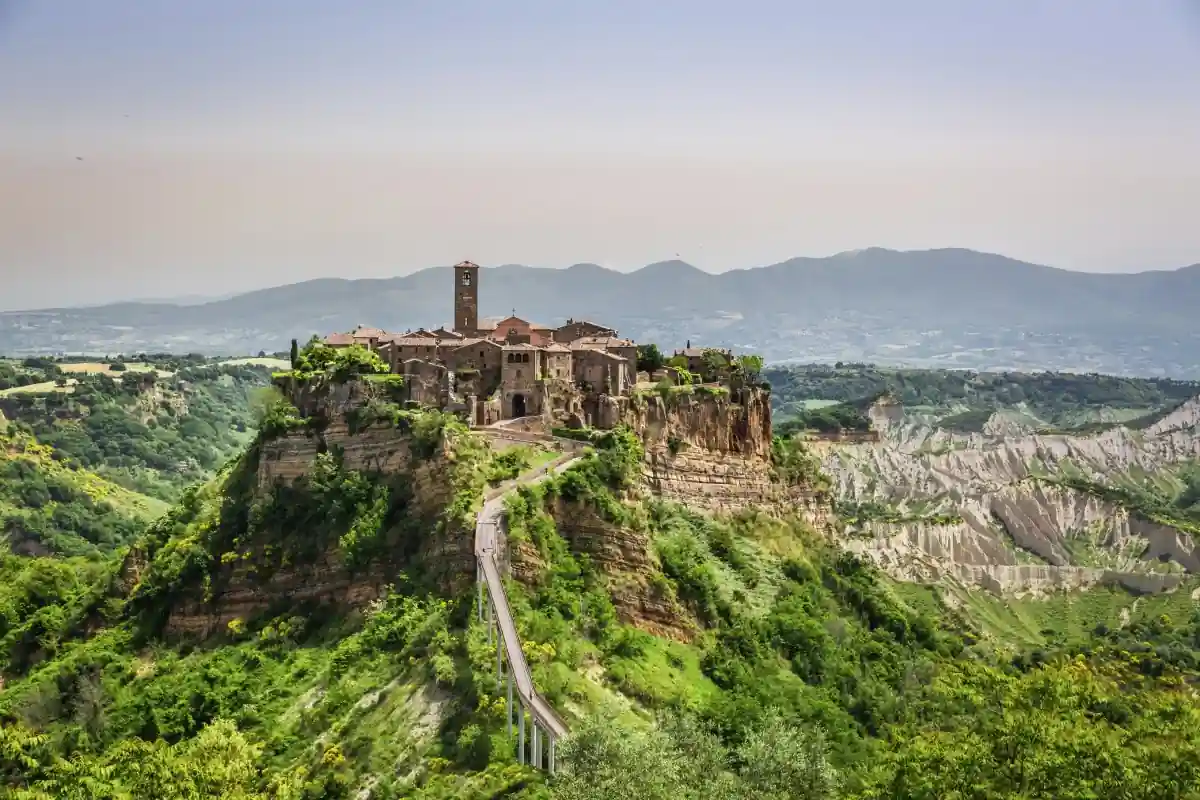
Perched dramatically on a crumbling cliff, Civita di Bagnoregio is often called the “dying town.” I remember the first time I crossed the pedestrian bridge at dawn — the entire village seemed suspended above the mist, like a dream. It’s one of the most hauntingly beautiful hidden gems I’ve visited in central Italy.
With only a handful of year-round residents, Civita feels frozen in time. Cobbled streets, geranium-filled balconies, and Renaissance arches make every corner photogenic. At sunrise, the view from the belvedere is unforgettable.
Best time to visit: Early morning in spring or autumn, when tour groups are absent and light conditions are perfect for photography.
How to get there: The nearest hub is Orvieto, from where buses or car rentals bring you close. The final stretch requires walking across the bridge.
What to do: Explore medieval churches, sip local wine in small enotecas, and climb narrow stairs to hidden viewpoints. If you enjoy history, the small museums give insight into the town’s fragile geology.
Where to stay: Most travelers base in Orvieto, though Civita has a handful of B&Bs where overnight stays offer unmatched quiet.
Photo tip: Arrive at dawn for mist-filled valleys — easily one of the most iconic sunrise shots in Italy.
Caution: The bridge is steep and exposed; bring water and good shoes.
7. Bevagna, Umbria
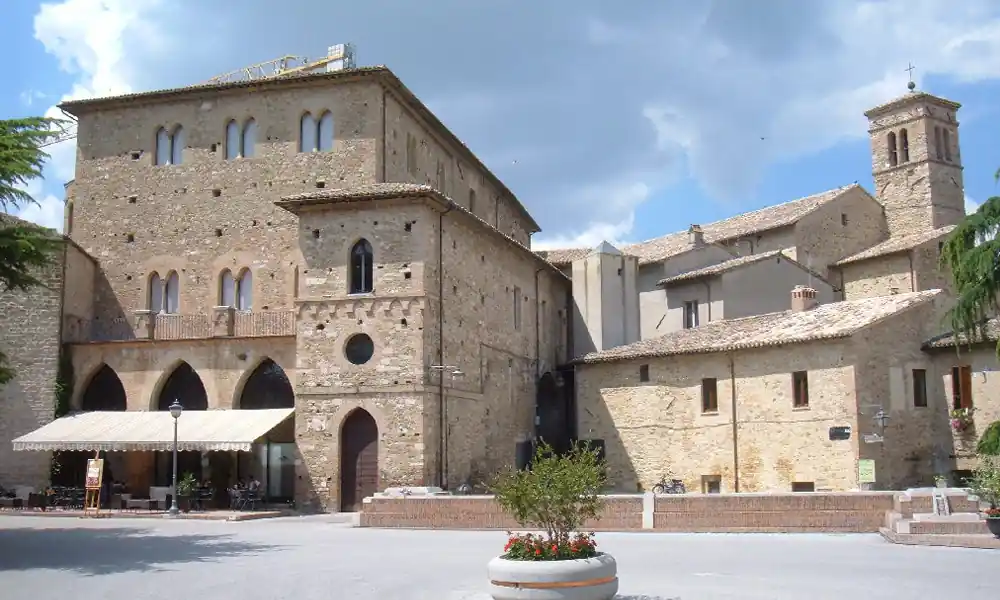
In Umbria, many travelers head straight to Assisi or Perugia, but Bevagna offers something more intimate. I visited during the annual medieval festival, Mercato delle Gaite, and felt transported back to the 13th century — locals in costume, craftspeople forging iron, and markets lit by torches.
Bevagna’s Roman and medieval roots shine through in its piazzas and churches, but it’s also a hub for cyclists and wine lovers. The surrounding vineyards produce some of Umbria’s best reds, and I’ve joined guided bike tours through rolling hills dotted with olive groves.
Best time to visit: June for the festival, or September when grape harvest brings energy to the town.
How to get there: Accessible by train from Foligno or Perugia, though cycling into town is a scenic option. Car rentals allow easier vineyard hopping.
What to do: Wander Piazza Silvestri, visit Roman mosaics, and cycle along country roads. Don’t miss tasting local wines paired with rustic Umbrian dishes.
Where to stay: Agriturismos in the countryside offer both vineyard views and home-cooked meals.
Photo tip: During the festival, the piazza at night glows with lanterns — it’s pure atmosphere.
Caution: Festivals can be crowded; book stays early.
8. Talamone, Tuscany
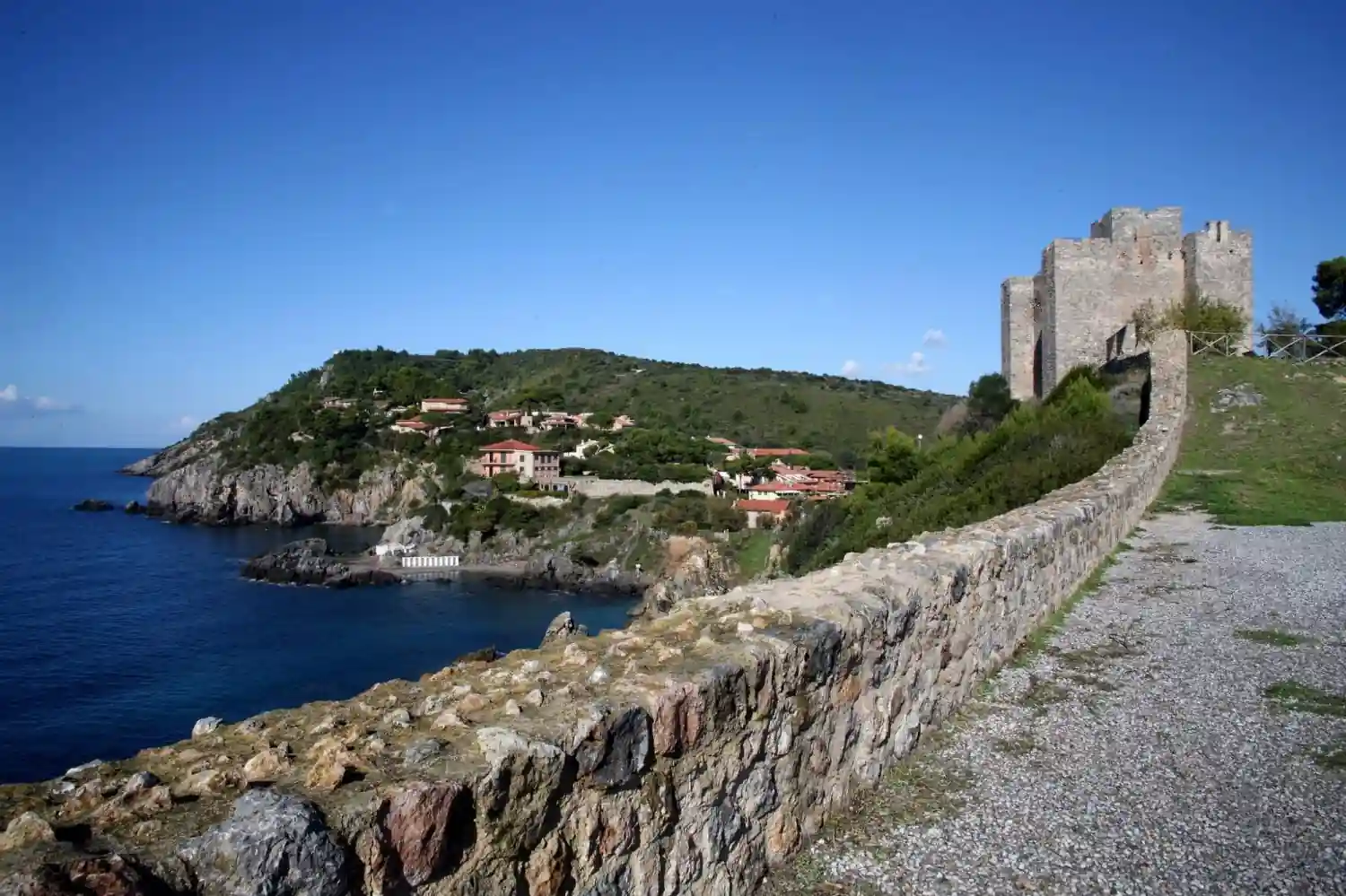
Talamone is a fortress town perched above the Tyrrhenian Sea, guarding the entrance to the Maremma Natural Park. I stopped here on a road trip through southern Tuscany and was surprised by how few visitors lingered, despite its cinematic beauty.
The 13th-century Rocca fortress towers above the harbor, offering sweeping views of both sea and countryside. From here, it’s a short hop into Maremma park, one of Tuscany’s last wild coastal landscapes, filled with hiking trails and sandy coves.
Best time to visit: Late spring or September — warm enough for swimming but quieter than July and August.
How to get there: Accessible by regional Italian trains that connect Grosseto to Orbetello, then a short bus or car ride.
What to do: Swim in the turquoise bays, hike through Maremma’s pine forests, and enjoy seafood dinners overlooking the marina.
Where to stay: Small seaside guesthouses with balconies facing the water.
Photo tip: Sunset from the fortress walls, when the coastline turns golden.
Caution: Maremma park trails close early in summer evenings to protect wildlife.
9. Castelmezzano & Pietrapertosa, Basilicata
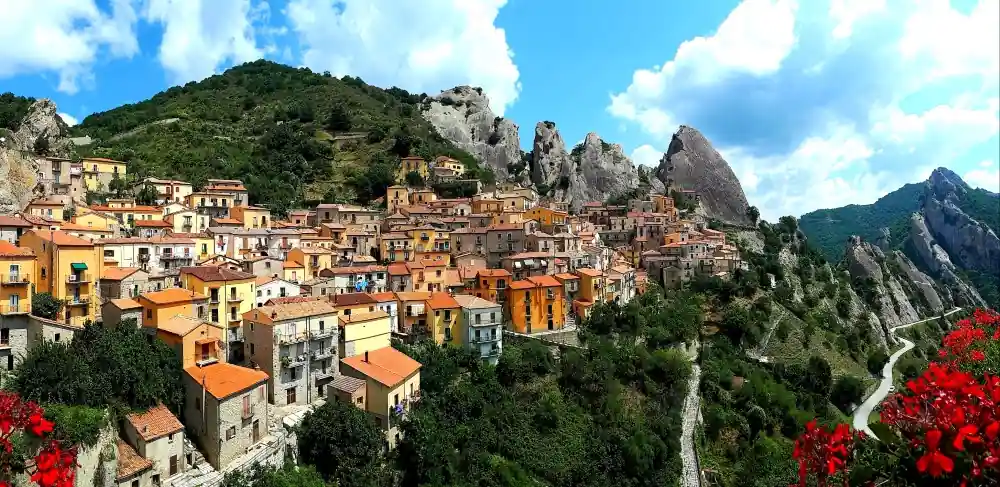
High in the Dolomiti Lucane mountains, Castelmezzano and Pietrapertosa are two villages clinging to jagged peaks. I’ll never forget crossing the valley by zipline — known as the “Flight of the Angel” — with cliffs rising dramatically on both sides.
These twin towns feel suspended in time, with narrow alleys, ancient stone houses, and hiking trails leading deep into the Dolomiti Lucane. The sense of remoteness here makes every arrival feel earned.
Best time to visit: Summer and early autumn, when trails are open and festivals bring life to the villages.
How to get there: Car rentals are almost essential — buses are infrequent.
What to do: Try the zipline, explore the Castello Normanno ruins, and hike trails connecting both villages. For food, rustic trattorias serve mountain specialties like lamb stew.
Where to stay: Family-run B&Bs in stone houses, often with terraces overlooking the valley.
Photo tip: Capture both villages at twilight when house lights begin to twinkle against the cliffs.
Caution: Roads are narrow and winding; driving requires focus.
10. Tropea, Calabria
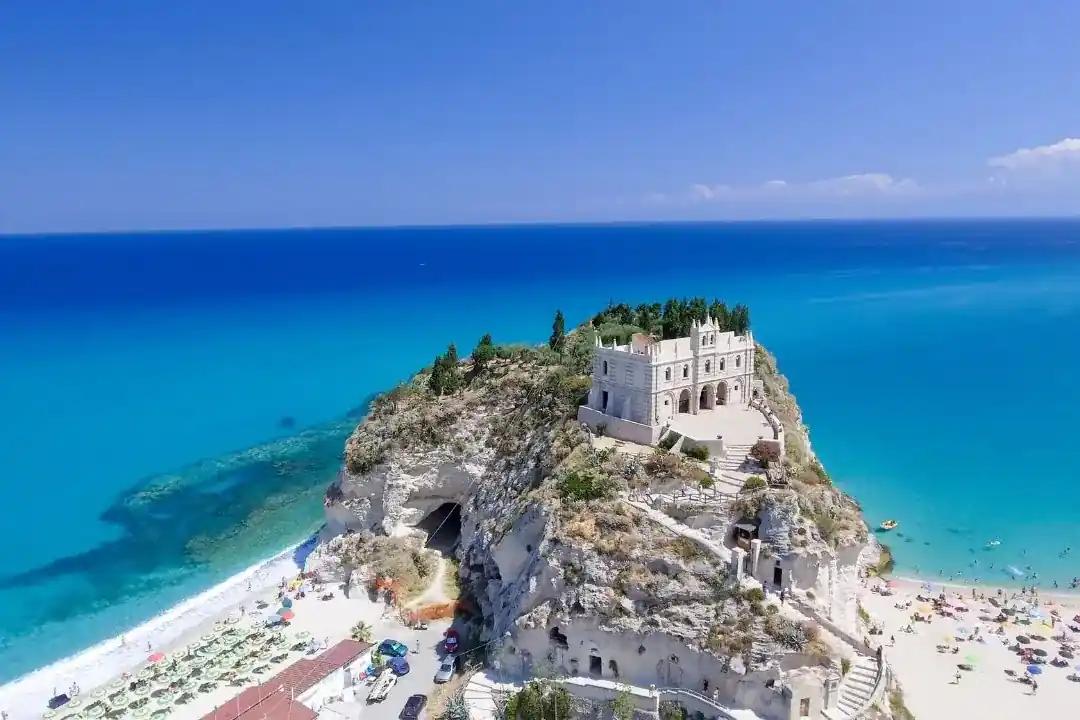
Tropea is one of those hidden gems that I almost hesitated to write about — because once you’ve seen its cliffside setting above turquoise waters, you’ll understand why locals want to keep it quiet. I visited during late September and found warm seas, quiet beaches, and some of the sweetest onions I’ve ever tasted.
Tropea’s old town spills over dramatic cliffs, while the sanctuary of Santa Maria dell’Isola crowns a rocky outcrop surrounded by sea. The town is also famous for its red onions, which locals use in everything from pasta to gelato.
Best time to visit: September or early October, when the water is warm but summer crowds have gone.
How to get there: Regional Italian trains stop in Tropea, making it surprisingly accessible without a car.
What to do: Stroll cobbled alleys, swim at Spiaggia della Rotonda, and try onion-based dishes at seaside trattorias.
Where to stay: Boutique hotels carved into cliffside buildings, offering views that stretch forever.
Photo tip: From the beach, frame Santa Maria dell’Isola against the cliffs at sunset.
Caution: Beaches can be crowded in peak summer; off-season travel is far more rewarding.
11. Favignana, Aegadian Islands
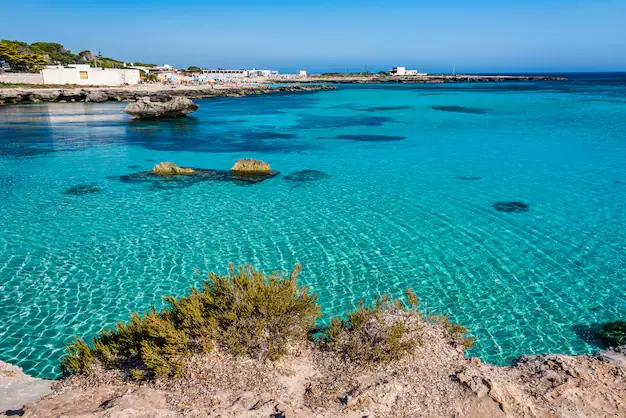
Of all the islands I’ve visited in Italy, Favignana remains one of my favorites for cycling. I still remember renting a bike at the ferry port and coasting past turquoise coves where the water was so clear it looked like glass. Unlike more crowded islands, Favignana still feels laid-back and personal.
Once famous for its tuna fishing, the old tonnara (tuna factory) has been transformed into a fascinating museum. Beaches like Cala Rossa and Lido Burrone offer swimming in crystal-clear waters, and cycling paths circle the entire island.
Best time to visit: Late May to June, or September when ferries run often but summer crowds have thinned.
How to get there: Regular ferries connect from Trapani, and the crossing takes less than an hour.
What to do: Cycle the island loop, visit the tuna museum, and explore hidden coves by kayak. Food lovers should try fresh tuna dishes served by family-run trattorias.
Where to stay: Small boutique hotels in restored fishermen’s houses.
Photo tip: Cala Rossa from above — the turquoise water contrasting against white stone cliffs is unforgettable.
Caution: July and August can be scorching hot for cycling; start rides early.
12. Otranto & the Salento Coast, Puglia
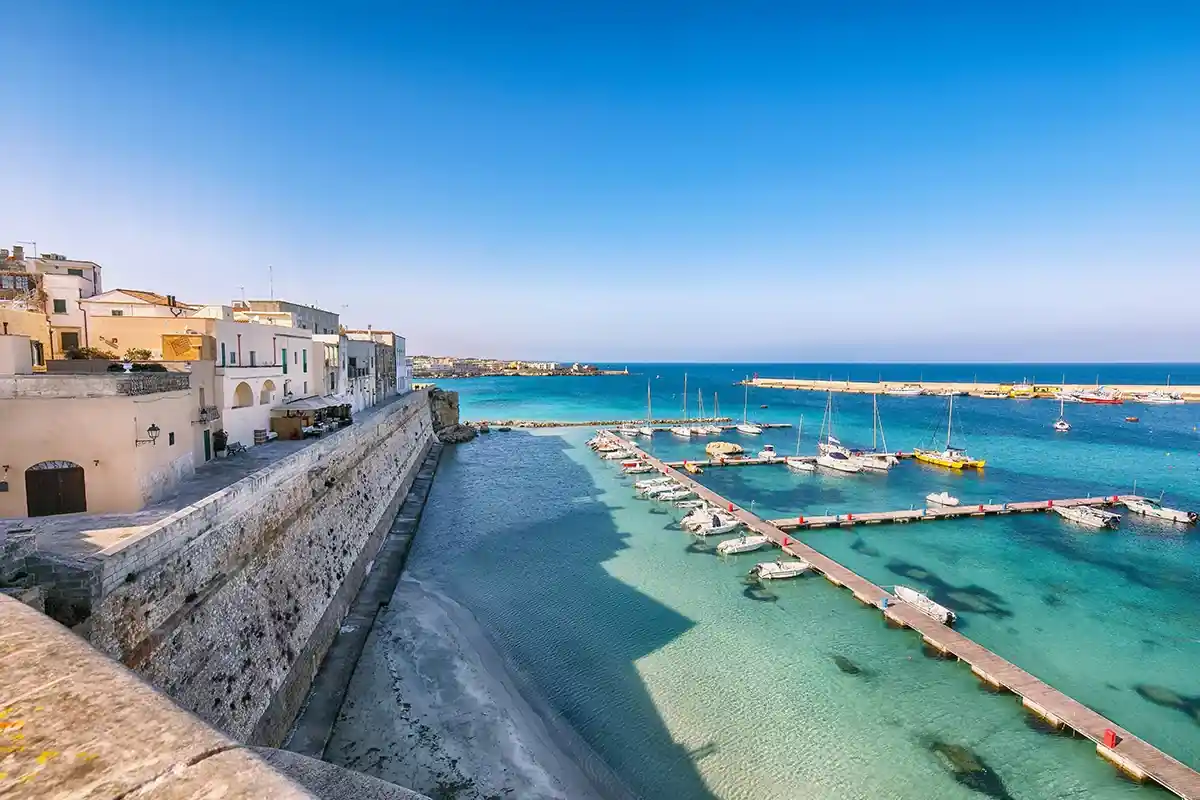
When I first reached Otranto, I was struck by the way the Adriatic seemed to shine a brighter blue here. The town’s historic center is a maze of whitewashed alleys, while just outside you’ll find rugged coastlines and surreal sights like the bauxite lake.
Otranto’s cathedral mosaic is one of the largest in Europe, telling stories from mythology to everyday medieval life. The nearby Salento Coast combines sandy coves, olive groves, and dramatic drives.
Best time to visit: Late spring and early autumn, perfect for coastal road trips and swimming.
How to get there: Italian trains connect Lecce to Otranto, though car rentals give freedom to explore the coast fully.
What to do: Visit the cathedral, walk the seafront promenade, and take a drive down the coast toward Santa Maria di Leuca. Don’t miss the surreal bauxite lake for photography.
Where to stay: Seaside B&Bs where balconies overlook the Adriatic.
Photo tip: Capture the bauxite lake at midday — the fiery red earth against emerald water looks unreal.
Caution: Summer weekends can get crowded with Italian holidaymakers.
13. Ginosa & Gravina di Puglia
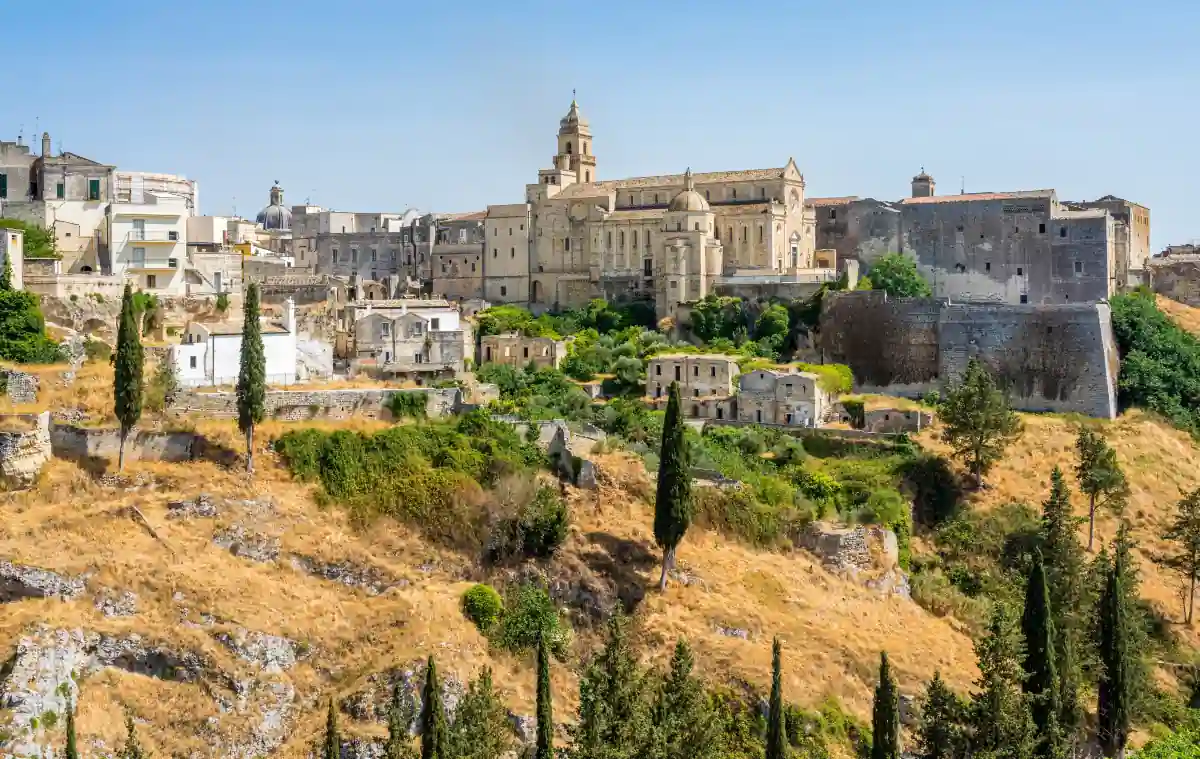
These rock-hewn towns of Puglia reminded me of Matera but without the tour buses. I wandered Gravina’s dramatic stone bridges and explored Ginosa’s sassi-style caves, where locals once lived carved directly into the cliffs.
Gravina’s bridge offers panoramic views across ravines, while Ginosa showcases centuries-old rock churches hidden in caves. Both towns feel raw and authentic, perfect for travelers seeking history without the gloss.
Best time to visit: Spring and autumn, when the heat is manageable for exploring.
How to get there: Best reached with car rentals from Bari or Taranto. Public transit is minimal.
What to do: Cross Gravina’s Ponte Acquedotto at sunset, explore cave churches in Ginosa, and enjoy rustic meals in small trattorias where recipes haven’t changed in generations.
Where to stay: Guesthouses in Gravina’s old quarter offer simple but authentic comfort.
Photo tip: Sunset from Gravina’s bridge, with the ravine glowing orange.
Caution: Steep climbs and uneven stone paths — bring sturdy shoes.
14. Dozza, Emilia-Romagna
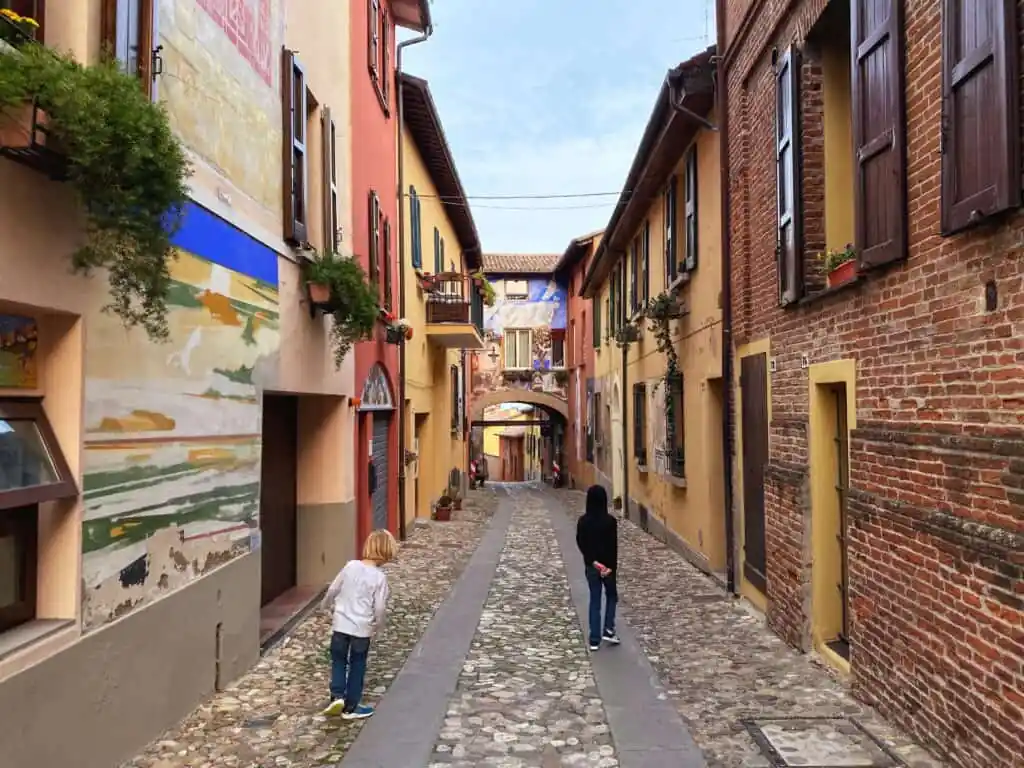
I came to Dozza for the fortress wine cellar and ended up staying for the murals. The whole village is an open-air gallery; doorways and facades become canvases, and every alley feels like a quiet conversation between color and stone.
Dozza hosts a renowned mural tradition, so art is woven into daily life. Inside the Rocca, the regional enoteca pours Emilia-Romagna’s best — a perfect pairing after an afternoon of wandering painted lanes.
Best time to visit: Late spring or September. Warm light flatters the murals, and tastings are relaxed.
How to get there: Base in Bologna or Imola and hop over by regional rail + short taxi/ride. The approach through vineyard country sets the mood.
What to do: Stroll Via De’Amicis and Via XX Settembre for standout pieces, then tour the Rocca’s wine cellar for guided tastings of Sangiovese and Albana. Nearby hills offer gentle walks between rows of vines.
Where to stay: Small B&Bs or a diffused hotel setup in the old village — hosts tend to be great storytellers and will point you to their favorite trattorie.
Photo tip: Early morning for soft, shadow-free walls; blue hour for warm window light against painted facades.
Caution: Many shops close for a long lunch; plan tastings and café stops around the pausa.
Keyword tally (this section): (no tracked semantic keywords used)
15. Lake Orta & Orta San Giulio, Piedmont
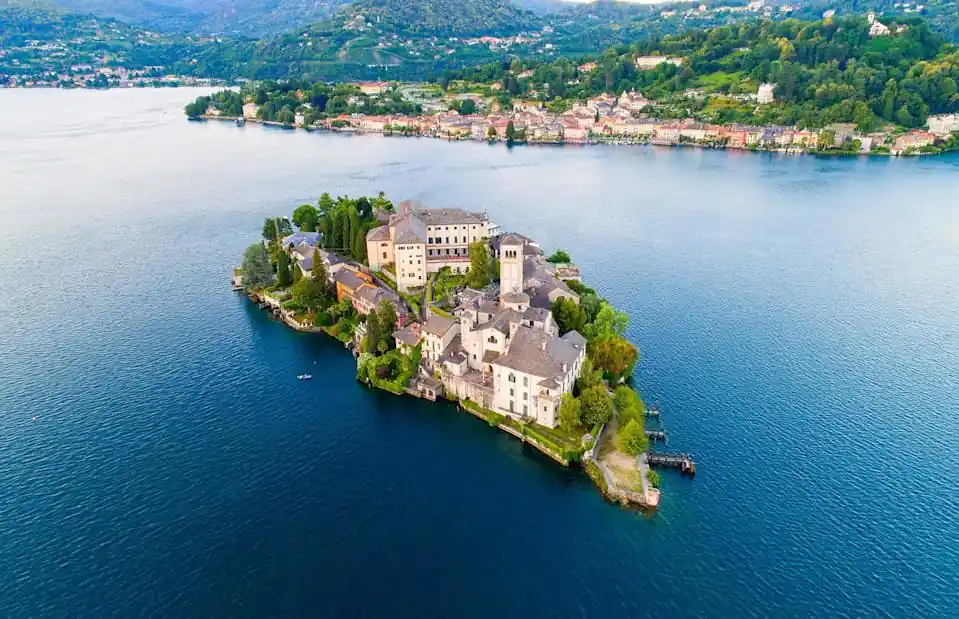
On quiet mornings the lake sits like glass, bells drift from the monastery island, and the scent of woodsmoke curls off the hills. I’ve returned in every season, but autumn — when chestnut sellers set up by the piazza — is the version that stuck with me.
Intimate scale, storybook lanes, and a contemplative vibe. The sacred hill (Sacro Monte) trails past frescoed chapels with balcony views that make you whisper without meaning to.
Best time to visit: May–June for wildflowers and ferries in full swing; late September–October for crisp air, golden light, and quieter lakeside walks.
How to get there: From Milan or Turin, ride regional rail to Orta-Miasino, then a short transfer to the waterfront piazza. Ferries knit together villages around the shore.
What to do: Ferry to the monastery island for a slow loop on the “Way of Silence,” climb Sacro Monte for chapels and viewpoints, and take a day jaunt toward Lake Maggiore for a contrast of scale and the elegant Borromean Islands.
Where to stay: Lakeside boutique hotels or historic villas a block off the water — quieter at night, still steps from the promenade.
Photo tip: Sunrise from the little stone jetty by Piazza Motta; sunset from Sacro Monte when the water turns copper.
Caution: Parking is limited near the center; if you’re driving, leave the car uphill and walk down. Winter ferry schedules are reduced.
Ready-Made Itineraries For Travelers
Northern Arc (5 Days)
When I had friends visiting northern Italy for the first time, I suggested they skip the obvious tourist attractions and follow this arc instead. It turned out to be one of their favorite trips.
Route: Milan → Lake Orta → Val di Funes → Chiavenna → Comacchio
- Day 1 – Milan to Lake Orta: Start with Lake Orta, a quieter cousin to Lake Como and Lake Garda. The ferry to Isola San Giulio feels like stepping into another century.
- Day 2 – Val di Funes: Head into the Dolomites. Staying at Hotel Messnerwirt gave me alpine warmth and easy access to trails. Don’t miss a hike to Lago di Braes, one of the most photogenic lakes in South Tyrol.
- Day 3 – Chiavenna: Enjoy waterfalls and crotti dining near the Swiss border. It’s the perfect midpoint for relaxing meals.
- Day 4 – Comacchio: Trade mountains for canals. Birding in the Po Delta at dawn is magical — flamingos in flight against the morning light.
- Day 5 – Return to Milan. If you love history, a detour to Cividale del Friuli, known for Lombard heritage, adds depth.
Central Italy (5 Days)
Central Italy is where medieval towns outshine the famous cities if you give them a chance. I’ve guided travelers through this route, and they came back saying it was “the real Italy.”
Route: Orvieto → Civita di Bagnoregio → Bevagna → Dozza → Brisighella
- Day 1 – Orvieto: A perfect base for exploring, with its Duomo and underground caves.
- Day 2 – Civita di Bagnoregio: Walk across the bridge at sunrise for haunting views.
- Day 3 – Bevagna: Time your trip for the Mercato delle Gaite festival. If not, vineyards and cycling trails are year-round.
- Day 4 – Dozza: Stroll through colorful streets painted with murals. Inside the fortress, the wine cellar offers tastings of Emilia-Romagna vintages.
- Day 5 – Brisighella: End with olive oil tastings and panoramic hikes up to the fortress. The pace here is slow — a fitting finale.
Southern & Islands (6 Days)
The south requires a little more time because distances are greater, but the payoff is enormous. I did this route by mixing trains, ferries, and car rentals, which made it both adventurous and manageable.
Route: Tropea → Otranto → Favignana → Castelmezzano/Pietrapertosa
- Day 1–2 – Tropea: Relax on cliffside beaches, taste onion-based dishes, and visit Santa Maria dell’Isola.
- Day 3 – Otranto & Salento Coast: Rent a car to drive through olive groves and coastal roads, stopping at the surreal bauxite lake.
- Day 4 – Favignana: Take the ferry from Trapani. Rent a bike and cycle past Cala Rossa — the sea here is pure turquoise.
- Day 5–6 – Castelmezzano & Pietrapertosa: Finish high in the Dolomiti Lucane mountains. The “Flight of the Angel” zipline is worth the adrenaline. Evening meals in tiny trattorias taste even better after long hikes.
Best Time to Visit
One of the lessons I’ve learned from traveling repeatedly across Italy is that timing can completely change your experience. The same village can feel bustling in summer and contemplative in late autumn.
For most of these hidden gems, shoulder seasons — spring and September — deliver the best mix of weather, open services, and smaller crowds.
Here’s a seasonal breakdown based on regions and personal experience:
| Region / Destination | Best Seasons | Why | Travel Notes |
|---|---|---|---|
| Northern Lakes & Dolomites (Lake Orta, Lake Como, Val di Funes, Chiavenna, Lago di Braes) | Summer & Autumn | Hiking trails open, warm alpine meadows, autumn foliage | Mountain weather changes fast — pack layers |
| Central Italy Towns (Civita di Bagnoregio, Bevagna, Dozza, Brisighella, Cividale del Friuli) | Spring & Fall | Festivals, vineyard harvests, pleasant walking weather | Trains and public transit are reliable, though small towns may close shops midday |
| Southern Coasts & Islands (Tropea, Otranto, Favignana, Ginosa & Gravina) | Late Spring & September | Warm seas, quieter beaches, cultural festivals | July–August heat can be extreme; expect limited shade on coastal hikes |
| Mountain Villages (Castelmezzano & Pietrapertosa, Comacchio birding areas) | Summer & Early Autumn | Long daylight hours, cultural events | Roads can be winding; plan drives carefully |
Insider tips from experience:
- June is lively with local festivals but not yet peak tourist rush.
- September offers the best mix of warm weather, open beaches, and vineyard harvests. I’ve done road trips this month and found both affordable stays and fewer crowds.
- Winter is beautiful in alpine regions like Val di Funes or Lago di Braes — but keep in mind many agriturismos and small inns close for the season.
Ultimately, each of these hidden gems rewards slow travel. Spending two to three nights per stop allows you to catch sunrise light, meet locals, and settle into the rhythm of each place rather than rushing through.
Practical Tips
Transport
Getting around Italy’s lesser-known towns is often half the adventure. Over the years, I’ve tested every option — from Italian trains to local buses and small car rentals. Here’s what works best:
- Italian trains: Great for hubs like Orvieto, Tropea, and Talamone. I’ve used them countless times; they’re reliable and connect well to mid-sized towns.
- Car rentals: Essential for villages like Castelmezzano or Ginosa. I’ve learned that the freedom of a car makes exploring remote areas and vineyards possible. Just note: old towns often have ZTL (restricted traffic zones) where you can’t drive in.
- Public transit: Works for day trips near larger cities, but in small towns, schedules can be sparse. I once missed the last bus out of Civita di Bagnoregio and had to share a ride with locals — a story that became a highlight of the trip.
- Ferries: For Favignana or Isola di Ponza, ferries are frequent in summer but scale back in winter. Always check seasonal timetables.
Where to Stay
Over the years, I’ve realized that where you stay often defines your memory of a place. In Italy’s hidden gems, accommodations are small-scale and personal — which is part of the magic.
- Agriturismos: Rural farm-stays are my top recommendation. In Bevagna, I stayed on a vineyard where breakfast included homemade olive oil and fresh bread.
- Boutique B&Bs: In Brisighella and Lake Orta, these gave me insider tips from owners who knew the region better than any guidebook.
- Diffused hotels: Found in towns like Dozza, where historic houses across a village are converted into rooms under one hotel name — it feels like you’re living among locals.
- Family inns: In Chiavenna, the innkeeper personally walked me through hiking trails, marking them on a paper map — a kind of hospitality you can’t buy in big hotels.
Responsible Travel
I’ve learned through experience that small towns thrive when travelers respect local rhythms and traditions. Here’s how to make your journey more sustainable:
- Support local eateries: Skip chain restaurants — in Tropea, I dined at family-run trattorias where the red onions were grown just outside town.
- Be mindful with photography: In villages like Ginosa, some cave churches are still used by locals. Always ask before taking photos.
- Respect closures: In Comacchio, some areas of the Po Delta wetlands are restricted during bird nesting season. These rules help protect fragile ecosystems.
- Slow down: Instead of rushing, spend multiple nights in each place. Not only do you reduce transit emissions, but you also build a real connection with locals.
Travel isn’t just about what you see — it’s about how you move through a place. These towns welcome visitors who take time to appreciate both their beauty and their fragility.
Mini-Guides by Interest
Every traveler sees Italy differently — some arrive with hiking boots, others with cameras, and many with an appetite. After years of circling back to these villages and valleys, here’s how I’d match the hidden gems to different travel styles.
For Hikers
- Val di Funes: I spent long summer days on trails like the Adolf Munkel, where the Dolomites loom like cathedrals. The Biathlon Center is also nearby if you want to try cross-country skiing in winter.
- Castelmezzano & Pietrapertosa: The Dolomiti Lucane mountains are rugged but rewarding. The zipline “Flight of the Angel” is one of the most thrilling outdoor experiences I’ve had in southern Italy.
For Food Lovers
- Brisighella: Olive oil tastings here are as serious as wine. I once spent an afternoon with a farmer learning to distinguish subtle flavors.
- Dozza: Murals decorate the streets, but the real treasure is underground in the fortress wine cellar — I’ve sampled vintages you rarely see outside Emilia-Romagna.
- Tropea: Red onions sweet enough to be turned into jam or gelato. I didn’t believe it until I tried it myself.
- Favignana: Fresh tuna traditions run deep — even the museum is dedicated to it. Eating grilled tuna by the harbor was one of those meals I’ll never forget.
For Photographers
- Civita di Bagnoregio: Sunrise across the valley fog is nothing short of magical. Tripods are common here at dawn.
- Lake Orta & Isola San Giulio: The monastery rising from misty waters has given me some of my favorite Italian shots.
- Otranto & Salento Coast: The bauxite lake’s colors look like something from another planet — red earth against emerald water.
For Families
- Lake Orta: Calm, swimmable waters and ferry rides to Isola San Giulio are gentle adventures kids enjoy.
- Val di Funes: Meadows are wide, safe, and perfect for picnics. Farms often welcome children to meet animals.
- Comacchio: Flat cycling routes and boat rides through the canals make it easy and fun for families.
Final Thoughts
After years of traveling through Italy, I’ve learned that the country’s magic isn’t limited to the Colosseum, the canals of Venice, or the galleries of Florence. The real treasure lies in its quieter corners — villages perched on cliffs, lakeside sanctuaries hidden by morning mist, and mountain towns where the rhythm of life hasn’t changed for centuries. These are the true Hidden Gems in Italy.
If you’re planning your first visit, choose one cluster from this guide and explore it deeply rather than trying to cover everything. For repeat travelers, balance one familiar destination with something completely new — like pairing Lake Orta with Tropea, or Civita di Bagnoregio with Favignana. That contrast is what keeps Italy endlessly surprising.
Above all, move slowly. Share meals in family-run trattorias, respect local customs, and give yourself time to absorb the pace of life in these small towns. In the end, it’s not about how many places you see, but how deeply you connect with them. Italy rewards travelers who linger.
Frequently Asked Questions
1. What defines a hidden gem in Italy?
For me, it’s not just about being lesser-known. A true hidden gem is a place where local traditions still shape daily life, where you can wander without battling crowds, and where authenticity outweighs tourist infrastructure. Places like Brisighella or Ginosa feel this way — unpolished, but deeply real.
2. Can I visit without a car?
Yes, but it depends on your route. Italian trains are excellent for towns like Tropea, Talamone, and Orvieto. However, villages such as Castelmezzano or Ginosa are best reached with car rentals. In my experience, a mix of trains and short-term rentals gives you the most flexibility.
3. Which destinations are safe for solo travelers?
Most of these towns are very safe, with welcoming locals. I’ve traveled solo through Civita di Bagnoregio, Dozza, and Lake Orta with no issues. Just keep in mind that in very small villages, evenings are quiet and services close early.
4. Which are the best for families?
Lake Orta, Val di Funes, and Comacchio are excellent for families. Calm lakes, wide meadows, and boat rides make them engaging for kids without overwhelming parents.
5. How many days per destination is ideal?
Generally, 2–3 nights per town. This gives you enough time to explore historic centers, take a hike or boat ride, and enjoy a relaxed evening meal. I’ve found that rushing through often means missing what makes these places special.
6. What’s the best time of year to plan a trip?
Spring (May–June) and early autumn (September) are ideal for most destinations. Summers can be hot and crowded, especially on the coast, while winters bring closures in alpine regions like Val di Funes.
7. Are these places tourist attractions or authentic towns?
They’re authentic towns first. Some — like Civita di Bagnoregio — attract day-trippers, but even there, staying overnight gives you an entirely different experience. In smaller places like Bevagna or Cividale del Friuli, daily life continues much as it always has.
8. Do travel agencies offer packages to these spots?
Some boutique travel agencies and Toscana Tour Experience include them in curated itineraries, but most big agencies stick to Florence, Rome, and Venice. Independent travel gives you far more flexibility and authenticity.
9. How do I budget for a trip like this?
Expect accommodations in agriturismos or B&Bs to run €60–120 per night for two people. Meals in trattorias are often €15–25 per person. Car rentals add costs but are often worth it in rural areas. Compared to Italy’s major cities, these destinations are more affordable overall.
10. Are there good tour guides available?
Yes, but you’ll need to book in advance, especially in smaller towns. I’ve had excellent experiences with local guides in Dozza and Tropea — they’re passionate, knowledgeable, and often more affordable than city-based guides.


